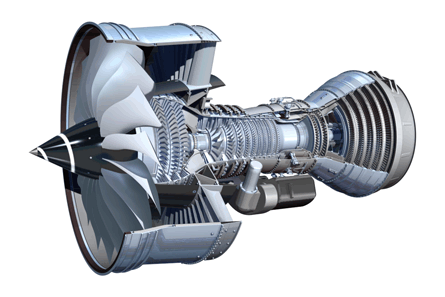With Rolls-Royce unconvinced by Airbus and Boeing proposals to tackle the single-aisle replacement market with re-engining, it is focusing on the longer-term development of all-new two- and three-shaft civil engine families that promise double-digit efficiency gains.
The two projects are known as "Advance2" and "Advance3" respectively. Advance2 covers the market for medium-sized business jets up to 150-seat narrowbodies and is being headed by the company's German subsidiary and two-shaft "centre of excellence" Rolls-Royce Deutschland.
Based on the latter's E3E technology demonstrator core, which has been under test for the past two years, Advance2 could deliver engines offering a 15-20% reduction in fuel burn by 2016-17, says R-R civil aerospace president Mark King.
 |
|---|
© Rolls-Royce |
"By putting a high-technology fan, similar to those that we use on large engines, on the front of this core we can actually build a good engine for the 150-seat market," says King.
"With a slightly smaller fan we can address the top end of the corporate market and the regional market, and by taking out a stage in the compressor we can use the same basic core to address the midsize corporate market as well. This is going to be a fundamental strategy for us going forward."
Advance3 is aimed at delivering new-generation three-shaft engines for widebody airliner developments anticipated for "the latter part of this decade", says King, adding: "Three-shaft still makes a very good prospect for the 150-seat market."
Advance3 is based around the Trent 1000 Environmentally Friendly Engine core technology demonstrator, which is due to be run in the fourth quarter of this year. It incorporates "lean-burn combustion" as well as technology from the ALPS low-pressure system demonstrator project.
Work is also under way on an open-rotor engine that King says could be ready in the first half of the next decade. "It's the only real game-changer relative to an advanced turbofan, and is the only thing that can deliver clear daylight - a clear 10% better," he says.
R-R has completed a third set of windtunnel tests of potential open-rotor blade designs, and King says: "We now firmly believe it will be quieter than any engine of an equivalent size that's flying today."
Armed with the technologies that it expects its Advance2, Advance3 and open-rotor projects to deliver, R-R believes it will be able to meet a diverse range of potential requirements.
"What we've done is really focused down our technology programmes, and we're focusing specifically on two new engine families which we would anticipate entering service in the latter part of the decade," says King.
- All the latest news, video and images from the 2010 Farnborough air show - New this year, live streaming video of each day's flying display
Source: Flight Daily News























